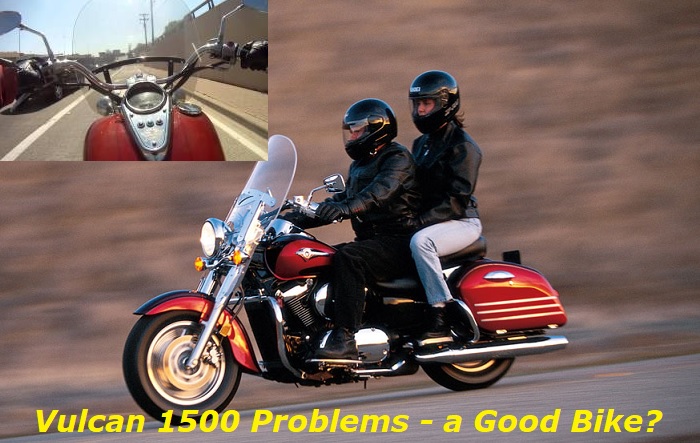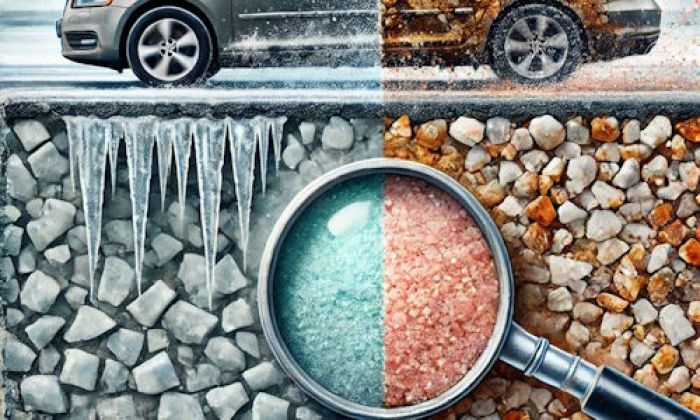Kawasaki brand name is synonymous with the top-quality motorbike. The Kawasaki Vulcan 1500 motorcycle is indisputably a top-tier cruiser. It not only gives you value for money in terms of massive power and retro styling, but it also serves as your ticket to royalty in the biking circles.
The Kawasaki Vulcan 1500 oozes oomph, but it has its own share of problems like any other machine. Since its introduction in 1987, the Vulcan has transitioned into an all-powerful cruiser which places it at the very top.
Despite the bike having some issues, Kawasaki has managed to resolve many of them. For the issues the company seems unable to sort, the many bikers' forums help greatly. This article explores some of the leading problems you may experience with your Vulcan 1500.

1. Oil Gear Pump Failure
All the Vulcans manufactured between 1987 and 2005 safe for the Drifter model came with a plastic oil pump gear. The other three types of Vulcans Classic, Nomad, and Tourer were prone to developing an oil gear failure. This problem often starts after the bike has covered between 4,000 and 15,000 miles.
The oil gear failure issue has affected almost every other owner of a pre-2005 Vulcan. If you want to buy the older model of Vulcan, you will need to ask about this issue from the seller. If the oil pump is plastic and has never been replaced, you will need to keep your eyes and ears open just in case this problem comes up.
Here are some of the symptoms of the oil gear pump failure in Vulcans:
- A whining sound from the clutch area
- Check Engine Light will come on
- Engine noises, usually a tapping sound
- Oil pressure issues
- Intermittent startup
How to solve oil gear pump failure
Kawasaki listened to the Vulcan 1500 owners and replaced the plastic oil pump gear for all the newer models from 2005 with a metal one. The company went further and replaced all the plastic oil gear pumps under warranty. It is now common to find a metal oil pump in every other Vulcan today.
You should visit a mechanic immediately if you notice the symptoms of oil pump gear failure. If left unattended, the seemingly small problem can escalate to a much bigger one and fast.
2. Gear 1-2 clunky shift
Older Vulcan bikers have reported a clunky sound when shifting from first to second gear. The earlier bikes had a bent shift fork, making it hard for the gears to mesh well when going into second gear.
After interacting with other Vulcan owners and mechanics on online bikers' forums, many older Vulcan owners have solved this issue by replacing the shift fork. Due to many Vulcans making that clunky and grinding sound when shifting into the 2nd gear, a lot of riders have accepted this to be normal.
However, as many Vulcan enthusiasts share, the trick is to shift to second gear when the speed is between 20 and 25mph. Some riders say they solve this problem by shifting to 2nd gear at between 10-15mph. Shifting through the rest of the gears is smooth and without any hitches. If you shift to second gear at a higher speed, say 30mph, the bike will either go into second gear or neutral.
3. Noisy at higher speeds
At speeds above 80mph, the Vulcan tends to be much louder than you might want it to be. If the noise bothers you at higher speeds, then you should invest in hard-chrome pipes and a cobra airbox removal kit. But if you love the rumble of your heavy machine as the wind whips past you, then no need to replace anything.
4. Transmission problem
This happens when the rider comes on the bike hard to the extent that it slips out of gear. This happens more so when the bike is in the second gear. This will force you to re-select the 2nd gear or pick another gear. A grinding sound might also be heard when you shift into the 2nd gear.
The solution
The best solution is a complete teardown of the engine. This remedy will involve replacing the shift fork. The second input and output gears will also need to be replaced. The clutch spring and new rings should be considered for replacement. The cost of a teardown is around $3,000 or more. Despite this issue, many riders have adapted and learned how to ride their bikes for an extra distance of up to 40,000 miles. This has led to many people not opting for a teardown.
5. Regulator wearing off early
The other problem that the Kawasaki Vulcan 1500 bikes develop is that of the regulator or rectifier dying earlier than it should. A regulator is a component in the bike's electric system that regulates and rectifies the voltage to the battery. It converts the AC current into DC and corrects the DC if below 14.5 volts before redirecting it to the battery.
Symptoms of a failing regulator/rectifier
If the shunt regulator is blown, then the regulator will fail to rectify the voltage going into the battery. This can lead to an overcharge of the battery, which can damage the battery and at times even cause it to blow up. Below are some symptoms of a shunt regulator burnout:
- You will notice the wiring harness has visibly deteriorated.
- The battery charge will read 17 volts and above. This is because the regulator is unable to convert the extra power.
- The headlights illuminate brightly before blowing out.
A diode burnout will also cause a regulator to fail. The failure of this component means the electric charge does not reach the battery. This problem will be exhibited by the following symptoms:
- Lights dimming or flickering
- Inadequate starts and
- Inconsistent voltmeter readings
How to solve this issue
Replacing the regulator/rectifier with a new one is the recommended way. The price of this component is not high. In the bikers' forums, you will find that many suggest buying the aftermarket regulators/rectifiers for the older Vulcans. The aftermarket component can handle heat much better than the stock ones.
6. Noisy Drive Pulley
In online forums, it is common to find Vulcan riders launching complaints or asking about noisy drive pulleys. Most owners just learn how to live with the noise, and some even enjoy the roaring sound. For those riders who find the noise to be too loud, lubricating the teeth with oil can dampen it.
Many riders who report this complaint say the squealing noise sounds like the belt is rubbing against something. Some riders have reported that the noise tends to become exaggerated after their bike fell, replaced the belt, or was involved in an accident.
Drive pulley failure indicators
- The belt tension is too tight or too loose
- The belt teeth need oiling
- Inaccurate alignment of the belt
- Drive pulley nut coming loose
How to solve the drive pulley issue
A lot of noise associated with the drive belt point to an incorrectly adjusted belt. The tension of this belt must be done to precision, or else the noise will not go away. Visiting a qualified mechanic will undoubtedly help you deal with this problem once and for all.
Some riders report that when the mech checked the belt, they also discovered that the nut for the belt had become loose. The loosening of this nut results in the output spline shaft and the drive pulley getting eroded. Therefore, regular inspection is recommended to help prevent these problems.
Should you buy the Kawasaki 1500 Vulcan?
The Kawasaki Vulcan 1500 is undoubtedly a machine every rider would wish to try. It is a heavy-duty two-wheeler cruiser that boasts puffy bodywork and elegant style. The engineers left nothing to chance when making this bike, especially on styling and functionality.
Though we have discussed a list of issues that face many of the owners of this top-of-the-range cruiser. This does not by any chance mean that this monster machine is wanting. Over the years, Kawasaki has been working to make the Vulcan 1500 stand out even more.
In 1996, the company introduced the Vulcan 1500 Classic, which looked bolder and boasted the biggest v-twin engine. The dual exhausts were stylishly staggered on the bike's right side. The manufacturer boosted the Vulcan's low RPM power by incrementally backing off the cam timing, valve lifting, and compression ratio.
On the highway, it's probably the coolest bike ever, but on backroads, you will not enjoy the ride as much. Kawasaki included a Positive Neutral Finder in the motorcycle to prevent you from switching from 1st to 2nd gear by mistake when at a standstill. The downside is that you will find yourself stuck on neutral before finding the 2nd gear when riding at very low speeds.
The Vulcan 1500 is a big machine designed to take you from point A to B in style. With the cruiser's elegance, be ready for some rumble, especially at higher speeds. The rubber mounts and the counterbalance absorb most of the vibrations while riding at highway speeds. It's important to bear in mind though that the Vulcan was designed to be a cruiser and not a high-performance sports machine.
About the authors
The CarAraC research team is composed of seasoned auto mechanics and automotive industry professionals, including individuals with advanced degrees and certifications in their field. Our team members boast prestigious credentials, reflecting their extensive knowledge and skills. These qualifications include: IMI: Institute of the Motor Industry, ASE-Certified Master Automobile Technicians; Coventry University, Graduate of MA in Automotive Journalism; Politecnico di Torino, Italy, MS Automotive Engineering; Ss. Cyril and Methodius University in Skopje, Mechanical University in Skopje; TOC Automotive College; DHA Suffa University, Department of Mechanical Engineering






Add comment